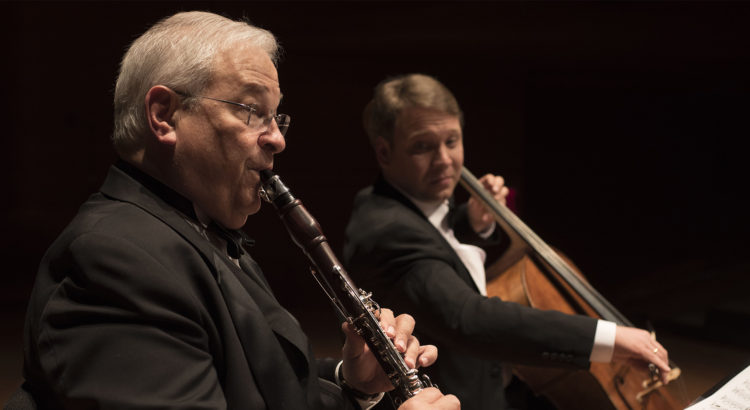Once again, the Chamber Music Society of Lincoln Center did not disappoint. It is a joy to witness performances where those onstage are truly enjoying themselves, and this was one. The thirteen performers, in different combinations of instrumentation for each of the four pieces on the program, managed to effortlessly convey the character and emotions of the music, allowing the audience to get lost from reality outside the walls of Rackham Auditorium.
The first piece on the program was Henry T. Burleigh’s Southland Sketches for Violin and Piano, with Mr. Chad Hoopes on violin and Ms. Gloria Chien on piano. The piece was at times whimsical, serious, or soulful, and I was captivated by Mr. Hoopes’s ability to (seemingly effortlessly) draw a matching range of sound colors from his violin. His sound and his playing were flexible in a way that allowed the audience to experience the full range of the piece, and for this reason it was one of my favorites on the program.
Next up was Antonín Dvořák’s Quintet in E-flat Major for Two Violins, Two Violas, and Cello, Op. 9, followed by Leonard Bernstein’s Sonata for Clarinet and Piano. Both were flawlessly executed, and the Bernstein Sonata was fascinating in that is was his first published piece.
That said, for me, the real culmination of the evening was the final piece: Appalachian Spring Suite for Ensemble by Aaron Copland. Often hailed as one of the most quintessential works by an American composer, Copland in fact won the 1945 Pulitzer Prize for his efforts. While Appalachian Spring was originally premiered in 1944 as a ballet commissioned for Martha Graham scored for thirteen instruments, Copland wrote an orchestral suite version the following year, removing about eight minutes of the original music. The version performed by the Chamber Music Society of Lincoln Center was completed by Copland in 1958, and it is an arrangement of the 1945 orchestral suite, but with the original instrumentation. For me, it was particularly interesting to hear this version after the Ann Arbor Symphony’s recent performance of the orchestral version, because I somehow expected that orchestration in my head. Instead, each entrance was a new surprise. I especially enjoyed the chords in piano during the opening of the first movement, and how it fit with the scoring of the chamber version. Although it is not Copland’s original version, this 1958 version gives a sense of how the music must have sounded when the ballet premiered at the Library of Congress. For me, it is impossible to hear Appalachian Spring (in any version) without conjuring images of frosted landscapes, sunrises over the mountains, and running streams. It is a true musical escape, just like the Chamber Music Society of Lincoln Center’s Friday evening performance of it.


